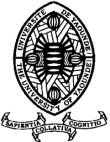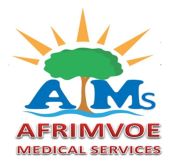Epidemiology, Diagnosis and Prognosis of Urinary Schistosomiasis in Yagoua (Cameroon)
Épidémiologie, Diagnostic et Pronostic de la Schistosomiase Urinaire à Yagoua (Cameroun)
DOI:
https://doi.org/10.5281/hra.v2i11.6128Keywords:
Schistosomiasis, Urinary, Diagnostic, Pronostic, Yagoua, CameroonAbstract
RESUME
Introduction. Au Cameroun, il existe des potentiels foyers de nombreuses maladies émergentes particulièrement celles tropicales négligées notamment la schistosomiase urinaire. L’objectif de notre étude est d’étudier la schistosomiase urinaire en se penchant sur ses particularités épidémiologiques, diagnostic et pronostic au Cameroun. Méthodologie. Il s’agissait d’une étude prospective transversale et analytique sur une période de 5 mois allant du 1 Avril au 30 Août 2023 à l’hôpital régional de Yagoua. Etaient inclus dans notre étude, les personnes âgée de plus de 10 ans, présentant lors de leur admission à l’hôpital un trouble urinaire et consentant à participer à l’étude. Résultats. La prévalence de la Schistosomiase urinaire dans notre étude était de 83,3%. La tranche d’âge la plus représentée était celle de 25-34 ans (37%). Le niveau d’étude le plus retrouvé était le niveau primaire (67%). Les participants vivaient à proximité des eaux stagnantes dans 87% des cas. Les espèces identifiées étaient S. heamatobium (80.7%) et S. mansoni (19.3%). Il existait une association significative entre la schistomiase urinaire et l’âge et le niveau scolaire. Les personnes ayant entre 25 et 34 ans ont 69 % de risque d’être infectées (OR=0,31 ; 95% CI : 0,04 – 1,75). Les personnes avec niveau inférieur au primaire avaient 4 fois plus risque de schistosomiase urinaire que les autres (OR= 9,6 IC : 7,88 – 13,0 P<0,001 , 000). Conclusion. La prévalence hospitalière de la SU élevée corrobore une bonne couverture du programme de lutte dans notre zone d’étude. La localisation atypique de l’espèce S mansoni renvoie à une réflexion sur l’évolution de la pathogénicité de cette espèce dans notre contexte.
ABSTRACT
Introduction. In Cameroon, there are potential outbreaks of many emerging diseases, particularly neglected tropical diseases such as urinary schistosomiasis. The aim of our study is to investigate urinary schistosomiasis by examining its epidemiological, diagnostic and prognostic features in Cameroon. Methodology. This was a prospective, cross-sectional, analytical study conducted over a 5-month period from 1 April to 30 August 2023 at the Yagoua regional hospital. All patients over 10 years of age who presented with a urinary disorder on admission to hospital and who consented to participate in the study were included. Results. The prevalence of urinary schistosomiasis in our study was 83.3%. The most common age group was 25-34 years (37%). The highest level of education was primary school (67%). Participants lived near stagnant water in 87% of cases. The species identified were S. heamatobium (80.7%) and S. mansoni (19.3%). There was a significant association between urinary schistomiasis and age and level of education. People aged between 25 and 34 had a 69% risk of being infected (OR=0.31; 95% CI: 0.04 - 1.75). People with less than primary education had 4 times the risk of urinary schistosomiasis than others (OR= 9.6 CI: 7.88 - 13.0 P< 0.001 , 000). Conclusion. The high hospital prevalence of UDS is consistent with good coverage of the control programme in our study area. The atypical location of the S mansoni species calls for careful consideration of the evolution of the pathogenicity of this species in our context.
References
Hajissa K, Muhajir AEMA, Eshag HA, Alfadel A, Nahied E, Dahab R, et al. Prevalence of schistosomiasis and associated risk factors among school children in Um-Asher Area, Khartoum, Sudan. BMC Res Notes. 2018 Oct 31;11(1):779.
Sady H, Al-Mekhlafi HM, Mahdy MAK, Lim YAL, Mahmud R, Surin J. Prevalence and Associated Factors of Schistosomiasis among Children in Yemen: Implications for an Effective Control Programme. PLoS Negl Trop Dis. 2013 Aug 22;7(8):e2377.
same ekobo A. Santé, Climat et Environnement au Cameroun. Jutey-Sciences. 1997;329.
Esther Nana D. Epidémiologie de la schistosomiase et des géohelminthiases dans l’Arrondissement de Kékem (Ouest- Cameroun). Int J Innov Appl Stud. 2014 Oct 4;8:1782–90.
Saotoing, Vroumsia, A.M Njan, F-N.Tchuenguem, J. Messi. Epidemiological survey of schistosomiasis due to Schistosoma haematobium in some primary schools in the town of Maroua, Far North Cameroon. Medwell Journals. International Journal of Tropical Medecine. 2011;19–24.
Audibert M, Ibrahima H, Hamidou I, Cassagne P. [Prevalence of Schistosoma haematobium schistosomiasis in Mayo Danaï (North Cameroon)]. Acta Trop. 1983 Sep 1;40(3):177–86.
Angora EK, Boissier J, Menan H, Rey O, Tuo K, Touré AO, et al. Prevalence and Risk Factors for Schistosomiasis among Schoolchildren in two Settings of Côte d’Ivoire. Trop Med Infect Dis. 2019 Sep;4(3):110.
Kabuyaya M, Chimbari MJ, Manyangadze T, Mukaratirwa S. Schistosomiasis risk factors based on the infection status among school-going children in the Ndumo area, uMkhanyakude district, South Africa. South Afr J Infect Dis. 2017 Aug 1;32(2):67–72.
Rudge JW, Stothard JR, Basáñez M-G, Mgeni AF, Khamis IS, Khamis AN, et al. Micro-epidemiology of urinary schistosomiasis in Zanzibar: Local risk factors associated with distribution of infections among schoolchildren and relevance for control. Acta Trop. 2008 Jan 1;105(1):45–54.
Hajissa K, Muhajir AEMA, Eshag HA, Alfadel A, Nahied E, Dahab R, et al. Prevalence of schistosomiasis and associated risk factors among school children in Um-Asher Area, Khartoum, Sudan. BMC Res Notes. 2018 Oct 31;11(1):779.
Geleta S, Alemu A, Getie S, Mekonnen Z, Erko B. Prevalence of urinary schistosomiasis and associated risk factors among Abobo Primary School children in Gambella Regional State, southwestern Ethiopia: a cross sectional study. Parasit Vectors. 2015 Apr 10;8(1):215.
Prevalence Distribution and Risk Factors for Schistosoma hematobium Infection among School Children in Blantyre, Malawi [Internet]. [cited 2021 Sep 20]. Available from: https://journals.plos.org/plosntds/article?id=10.1371/journal.pntd.0000361
Green AE, Anchang-Kimbi JK, Wepnje GB, Ndassi VD, Kimbi HK. Distribution and factors associated with urogenital schistosomiasis in the Tiko Health District, a semi-urban setting, South West Region, Cameroon. Infect Dis Poverty. 2021 Apr 12;10(1):49.
Zakhary K. Factors Affecting the Prevalence of Schistosomiasis in the Volta Region of Ghana. McGill J Med. 1997;3(2):93–101.
Senghor B, Diallo A, Sylla SN, Doucouré S, Ndiath MO, Gaayeb L, et al. Prevalence and intensity of urinary schistosomiasis among school children in the district of Niakhar, region of Fatick, Senegal. Parasit Vectors. 2014 Jan 3;7(1):5.
Kangama DCO. Enquete Epidemiologique Sur La Bilharziose Urinaire ADjoumanzana (District De Bamako). J Agric Environ Sci [Internet]. 2021 [cited 2022 Feb 16];10(1). Available from: http://jaesnet.com/vol-10-no-1-june-2021-abstract-2-jaes
Aubry PP. Schistosomoses ou bilharzioses. :10.
Schistosomiase [Internet]. [cited 2022 Feb 16]. Available from: https://www.who.int/fr/news-room/fact-sheets/detail/schistosomiasis
Molyneux DH, Hotez PJ, Fenwick A. “Rapid-Impact Interventions”: How a Policy of Integrated Control for Africa’s Neglected Tropical Diseases Could Benefit the Poor. PLOS Med. 2005 Oct 11;2(11):e336.
Natural Interactions between S. haematobium and S. guineensis in the Republic of Benin [Internet]. [cited 2022 Feb 16]. Available from: https://www.hindawi.com/journals/tswj/2012/793420/
La Schistosomiase - Causes, symptômes, traitement [Internet]. 2019 [cited 2022 Feb 16]. Available from: https://opc.ong/prevenir-la-cecite/approche/
Abera B. The epidmiology of schistosoma mansoni in the lake tana basin (Ethiopia): review with retrospective data analysis. NLM. 2023 apr;9(4):e14754doi:10.1016/j.heliyon.2023.e14754
Njunda L, Ngala E, Ngudia C,kamga F, Kwenti T. Prevalence and factors associated with urogenital schistosomiasis amo,g primary school children in barrage, Magba sub-division of Cameroon. BMC public health 17. 2017 july 3; 618(2017). https://doi.org.10.1186/s12889-017-4539-6
Mewabo AP, Moyou RS, Kouemeni LE, Ngogang JY, Kaptue L, Tambo E. Assessing the prevalence of urogenital schistsomiasis and transmission risk factors amongst school-aged children around Mapé am ecological suburbs in Malantouen district, cameroon. Infect Dis Poverty. 2017 Mar 6.6(1):40. doi: 10.1186/s40249.017.0257-7. PMID: 28260525;PMCID:PMC5338087
Joof A, Sanyang A, Camara Y, Sey A, Baldeh I, Lareef-jah S and Al. Prevalence and risk factors of schistosomiasis among primary school children in four selected regions of the Gambia. PloS Neglected Tropical Diseases. 2021 May 11. doi: 10.1371/journal.pntd.0009380
Moser W, Bati A, Ott R, Abderamane M, Clements L, Wampfler R and al. High prevalenc of urinary schistosomiasis in a desert population: results from an exploratory study around the Ounianga lakes in Chad. Infect Dis Poverty. 2022 Jan 7;11(1)5. doi: 10.1186/s40249-021-00930-4. PMID:34991728;PMCID:PMC8740043
Deribe K, Abdeljbar E, Samir H, Kailie E. High prevalence of urinary schistosomiasis in two communities in south darfur: implication fo interventions. Parasites and vectors. 2011 Fev; 4(1):41. doi: 10.1186/1756-3305-4-14
King C, Nara Yoon, Xiaoxia Wang, Lo N, Alsallaq R, Ndeffo-Mbah M and Al. Application of schistosomiasis consortium for operational research and evaluation study findings to refine predictive modeling of schistosoma mansoni and schistosoma heamatobium control in sub-saharan Africa. Am J Trop Med Hyg. 2020 Jul;103(& suppl):97-104. doi: 10.4269/ajtmh.19-0852. PMID:32400357;PMCID:PMC7351296
Pambe CJR-N, Ngaroua D, Amvene JM, Kabeyene AC, Nkodo JMM. Histopathologie d´un rare cas de schistosomiase intramédullaire et revue de la littérature. Pan Afr Med J. 2020 Oct 13;37:153.
Ratard RC, Kouemeni LE, Bessala MM, Ndamkou CN, Greer GJ, Spilsbury J, et al. Human schistosomiasis in Cameroon. I. Distribution of schistosomiasis. Am J Trop Med Hyg. 1990 Jun;42(6):561–72.
Sama MT, Oyono E, Ratard RC. High risk behaviours and schistosomiasis infection in Kumba, South-West Province, Cameroon. Int J Environ Res Public Health. 2007 Jun;4(2):101–5.
8ème Réunion statutaire du comité national de lutte contre la Schistosomiase et les Helminthiases Intestinales au Cameroun. | MINSANTE [Internet]. [cited 2022 Feb 16]. Available from: https://www.minsante.cm/site/?q=en/node/1097
1988asbm0123.pdf [Internet]. [cited 2022 Feb 16]. Available from: http://lib.itg.be/open/ASBMT/1988/1988asbm0123.pdf
FICHIR_ARTICLE_2190.pdf [Internet]. [cited 2022 Feb 16]. Available from: http://revues-ufhb-ci.org/fichiers/FICHIR_ARTICLE_2190.pdf
Amouh TCA. Prevalence de la schistosomiase a schistosoma haematobium chez les habitants du village d’ahomey dans la commune lacustre de sô-ava. [Internet]. EPAC/UAC; 2018 [cited 2022 Feb 16]. Available from: https://biblionumeric.epac-uac.org:9443/jspui/handle/123456789/406
JBC2014-2.pdf [Internet]. [cited 2022 Feb 16]. Available from: https://journal-fss.uac.bj/pdf/JBC/JBC2014-2.pdf#page=55
Diawara S. Etude des facteurs d’endémisation de la schistosomose dans la commune urbaine de Ségou [Internet] [Thesis]. USTTB; 2019 [cited 2022 Feb 16]. Available from: https://www.bibliosante.ml/handle/123456789/4868
Yelnik A, Issoufa H, Appriou M, Tribouley J, Gentilini M, Ripert C. [Epidemiologic study of S. haematobium bilharziasis in the rice belt of Yagoua (North Cameroon). I. Prevalence of infestation and evaluation of the parasitic load]. Bull Soc Pathol Exot Filiales. 1982 Feb;75(1):62–71.
Green AE, Anchang-Kimbi JK, Wepnje GB, Ndassi VD, Kimbi HK. Distribution and factors associated with urogenital schistosomiasis in the Tiko Health District, a semi-urban setting, South West Region, Cameroon. Infect Dis Poverty. 2021 Apr 12;10(1):49.
Sumbele IUN, Tabi DB, Teh RN, Njunda AL. Urogenital schistosomiasis burden in school-aged children in Tiko, Cameroon: a cross-sectional study on prevalence, intensity, knowledge and risk factors. Trop Med Health. 2021 Sep 16;49(1):75.
Bakuza J. Demographic Factors Driving Schistosomiasis and Soil-Transmitted Helminthiases in Milola Ward, Lindi District, Tanzania: A Useful Guide for Launching Intervention Programmes. East Afr Health Res J. 2018;2(2):156–67.
Ndassa A, Mimpfoundi R, Gake B, Paul Martin MV, Poste B. Risk factors for human schistosomiasis in the Upper Benue valley, in northern Cameroon. Ann Trop Med Parasitol. 2007 Sep;101(6):469–77.
Walonick S. D. Survival Statistics [Internet]. StatPac, Inc., 4425 Thomas Ave. S., Minneapolis, MN 55410; 2004. 143 p. Available from: admin@statpac.com
Rose M, Zimmerman E, Hsu L, Goldy A, Saleh E, Folkerthh R and Al. Atypical presentation of cebreral schistosomiasis four years after exposure to schistosoma mansoni. Epilepsy and behavior case reports. 2014 Feb;2:80-85. doi:10.1016/j.ebcr.2014.01.006
webster R. genetic diversity among natural populations of Schistosoma heamatobium might contribute to inconsistent virulence and diverse clinical outcomes. journal of micrscopy and ultrastructure. 2016 Dec; 4(4): 222-227. doi: 10.1016/j.jmau.2016.04.002
Gouignard N, Vanerstraete M, Cailliou K, Lescuyer A, Browaeys E, Dissous C. Schistosoma mansoni: structural and biochemical characterization of two distinct venus kinase receptor. Exp Parasitol. 2012 sep;132(1):32-9. doi: 10.1016/j.exppara.2011.05.007.Epub 2011 May 15. PMID: 21616067.
Maladies parasitaires endémiques. Manuel de la societe africaine de parasitologie (SoAp),tome 1. Les Editions d'avenir, abidjan, côte d'ivoire. 2021 jan 8. ISBN 978-2-38003-027-3
Caractéristiques et déterminants de l'emploi des jeunes au Cameroun.,Cahier de la stratégie de l'emploi. département de la stratégie en matière d'emploi. https://www.researchgate.net/publication/242560582
Klein S, Flanagan K. Sex differences in immune responses. NatRevImmunol. éà&- Oct;16(10):626-38; doi: 10.1038/nri.2016.90. PMID: 27546235
Ruggier A,Anticoli S,D'Ambrosio A,Giordani L,Viora M. The influence of sex and gender on immunity,infection and vaccination. Ann Ist Super Sanita. 2016 Apr-Jun;52(2):198-204. doi: 10.3315/ANN_16_0_11. PMID:27364394
Downloads
Published
How to Cite
Issue
Section
License
Copyright (c) 2024 Hermine Abessolo Abessolo, Raïssa Marie Josée Bakmano , Daniel Kossini, Blaise Sosthène Nyangda, Odile Messia Nguema, Boniface Ngangoue, Jean Guidel Elobo Ntanabe, Eric Tandi, Joseph Kamgno

This work is licensed under a Creative Commons Attribution-NoDerivatives 4.0 International License.
Authors who publish with this journal agree to the following terms:
- Authors retain copyright and grant the journal right of first publication with the work simultaneously licensed under a Creative Commons Attribution License CC BY-NC-ND 4.0 that allows others to share the work with an acknowledgement of the work's authorship and initial publication in this journal.
- Authors are able to enter into separate, additional contractual arrangements for the non-exclusive distribution of the journal's published version of the work (e.g., post it to an institutional repository or publish it in a book), with an acknowledgement of its initial publication in this journal.
- Authors are permitted and encouraged to post their work online (e.g., in institutional repositories or on their website) prior to and during the submission process, as it can lead to productive exchanges, as well as earlier and greater citation of published work










